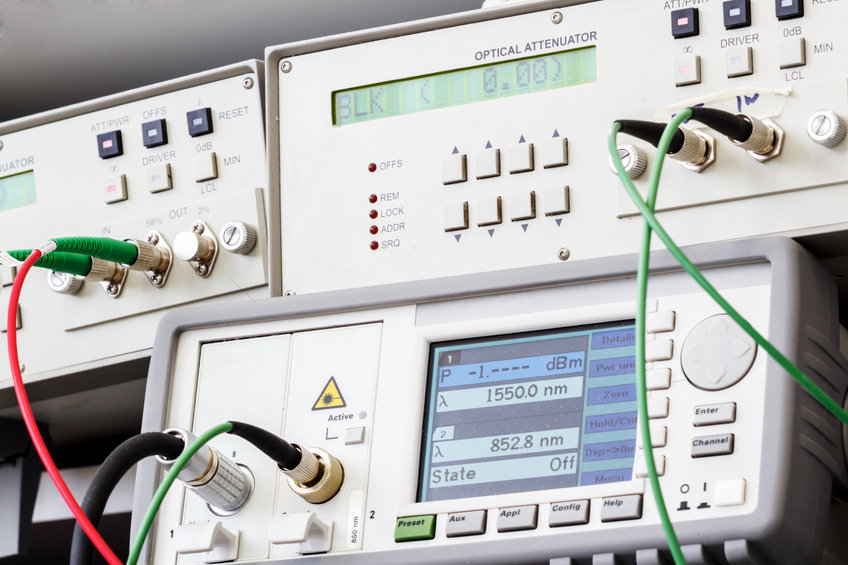Vital Attributes to Try To Find in Optical Fiber Testing Devices
When evaluating optical fibre screening tools, a number of necessary attributes necessitate mindful consideration to ensure ideal performance and reliability. Key qualities such as precision, accuracy, and straightforward interfaces play a critical duty in effective measurement and convenience of use. Moreover, the relevance of portability and sturdiness can not be overstated, particularly for on-site applications. Compatibility with existing market requirements enhances capability, while sophisticated dimension capabilities, consisting of TDR and OTDR testing, offer critical understandings into network honesty. Comprehending these functions will clarify exactly how to select the best tools for your specific demands. What elements might you focus on?
Accuracy and Accuracy
Accuracy and accuracy are critical parameters in the examination of optical fibre screening equipment. These two features make certain that measurements show truth performance of fibre optic systems, which is vital for efficient network installment, maintenance, and troubleshooting. Accuracy refers to the distance of a gauged value to the actual worth, while precision denotes the repeatability of measurements under the same problems.
When choosing optical fibre testing devices, it is important to consider tools that offer high accuracy and accuracy to minimize errors in data analysis. Instruments such as optical time-domain reflectometers (OTDRs) and power meters should have calibration systems to guarantee regular efficiency with time. Additionally, the specs offered by makers need to information the equipment's measurement unpredictability, which straight influences the dependability of examination results.
Additionally, the efficiency of optical fibre testing tools can be influenced by environmental aspects, such as temperature level and humidity. Selecting devices designed to minimize these variables will enhance measurement integrity. Finally, spending in optical fiber testing equipment with robust precision and precision features is essential for preserving optimal network performance and making sure the integrity of fiber optic communications.

User-Friendly Interface
The efficiency of optical fibre testing equipment is not exclusively established by its precision and accuracy; an easy to use user interface plays a significant role in improving functional effectiveness. A well-designed interface streamlines the interaction between the service technician and the equipment, enabling an extra instinctive understanding of intricate functions.
Secret functions of an easy to use interface include clear navigation menus, sensible formats, and quickly available controls. These components enable technicians to carry out examinations promptly without comprehensive training, decreasing the chance of customer error - ofda. Furthermore, aesthetic indicators such as progress bars, informs, and visual depictions of information can substantially boost the user experience by offering immediate comments on the screening procedure.
Additionally, customizable setups can better enhance operations by permitting individuals to adjust criteria according to details testing needs. This versatility not only conserves time yet also guarantees that the tools satisfies diverse application requirements.
Incorporating help functions, such as tooltips and detailed handbooks, right into the user interface can even more encourage users, promoting self-sufficiency and confidence in running the devices. Ultimately, a straightforward user interface is necessary for taking full advantage of the potential of optical fiber screening tools, causing much more reliable and reliable testing end results.
Portability and Longevity
Portability and resilience are essential attributes of optical fibre screening equipment, guaranteeing that it can endure the rigors of numerous settings while remaining simple to transport. Service technicians often visit their website function in varied settings, from telecoms centers to remote installations, making it necessary that screening tools are lightweight and portable (ofda). Tools made with transportability in mind generally includes ergonomic handles and cases that promote effortless motion, therefore enhancing operational efficiency on-site
Sturdiness is similarly important, as optical fiber testing devices is typically subjected to rough conditions, consisting of temperature changes, moisture, and physical effects. Devices created with sturdy materials such as strengthened plastics or metal real estates are much better matched for these atmospheres, minimizing the risk of damage during usage and transportation. Additionally, devices with water and dirt resistance scores, such as IP ratings, makes certain reliable performance in tough conditions.
Compatibility With Requirements
Ensuring compatibility with sector criteria is important for optical fibre screening equipment, as it directly influences the integrity and credibility of examination results. Optical fiber networks go through rigid efficiency criteria established by various organizations, including the Telecoms Sector Association (TIA) and the International Electrotechnical Payment (IEC) Evaluating devices needs to follow these criteria to guarantee that measurements correspond and comparable throughout various systems and atmospheres.
When picking optical fibre screening tools, users ought to verify that the tool meets appropriate criteria pertinent to their details application, such as those relevant to attenuation, bandwidth, and crosstalk. Tools that is compliant with recognized standards not only aids in accomplishing precise results yet also assists in interoperability among devices from different manufacturers.
Furthermore, compatibility with criteria makes sure that the tools can be used in regulatory compliance scenarios, which is crucial for projects in industries such as telecoms, aerospace, and armed forces applications. Therefore, buying optical fiber screening devices that aligns with existing sector requirements is a basic aspect of maintaining quality control and attaining optimal network efficiency.
Advanced Dimension Abilities
Advanced measurement capabilities are a defining function of modern-day optical fiber testing equipment, permitting extensive analysis of network efficiency. These capacities ensure that specialists can evaluate vital parameters such as signal loss, dispersion, and transmission capacity, which are crucial for keeping optimal communication effectiveness.
One trick facet is the capability to conduct time-domain reflectometry (TDR) and optical time-domain reflectometry (OTDR) examinations. These techniques make it possible for customers to determine faults, measure the size of fibers, and identify the place of flaws with exceptional accuracy - ofda. Sophisticated devices usually includes the ability to gauge optical power degrees, aiding to evaluate the overall health important site of the network and ensure compliance with the required requirements.
In addition, some screening gadgets more information provide sophisticated algorithms for real-time analysis, allowing quicker diagnosis and troubleshooting. In conclusion, investing in optical fibre screening devices with advanced dimension abilities is vital for guaranteeing network integrity and performance in today's demanding telecoms landscape.
Verdict
